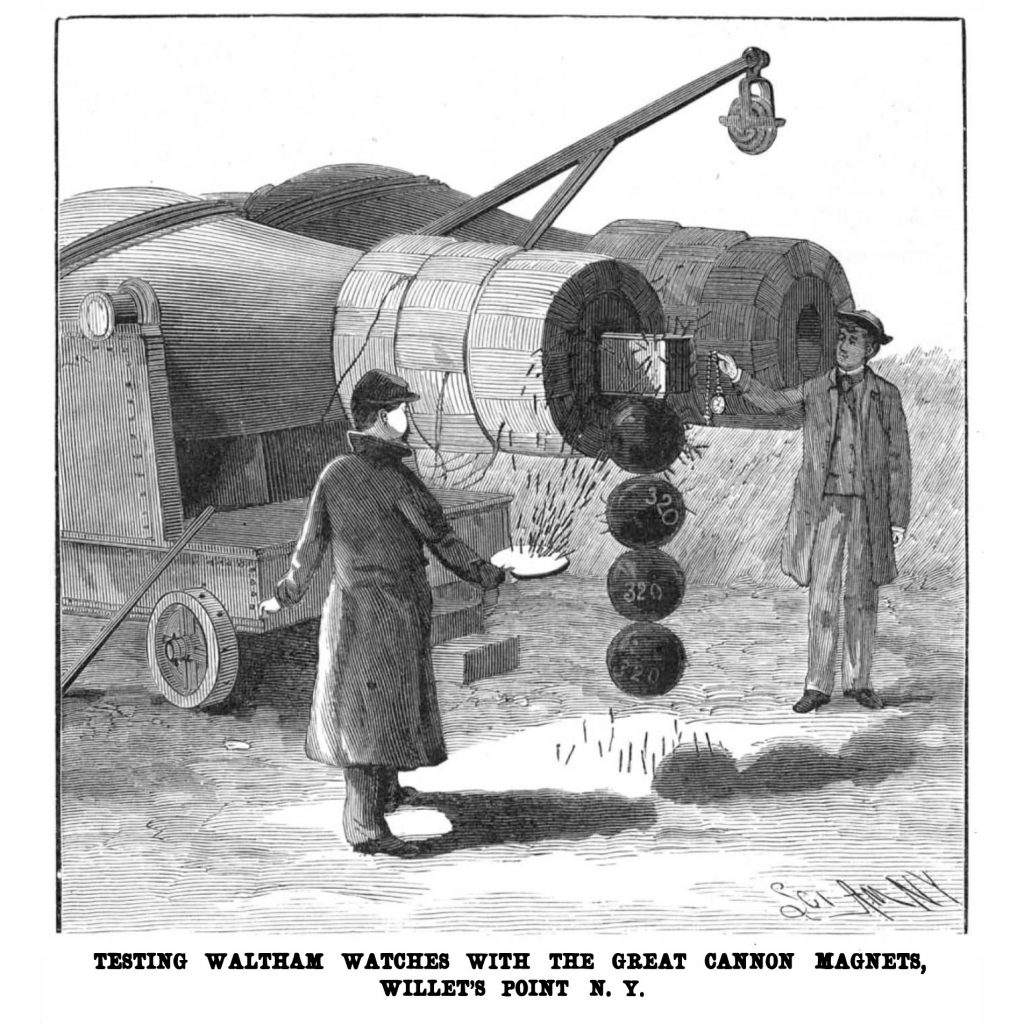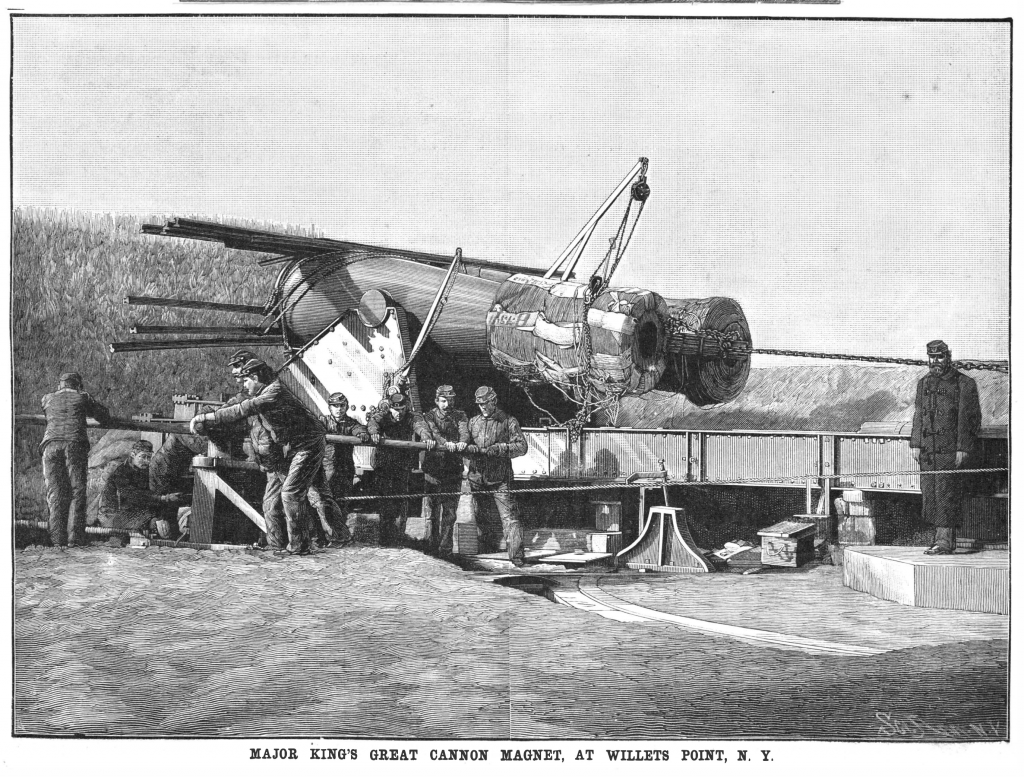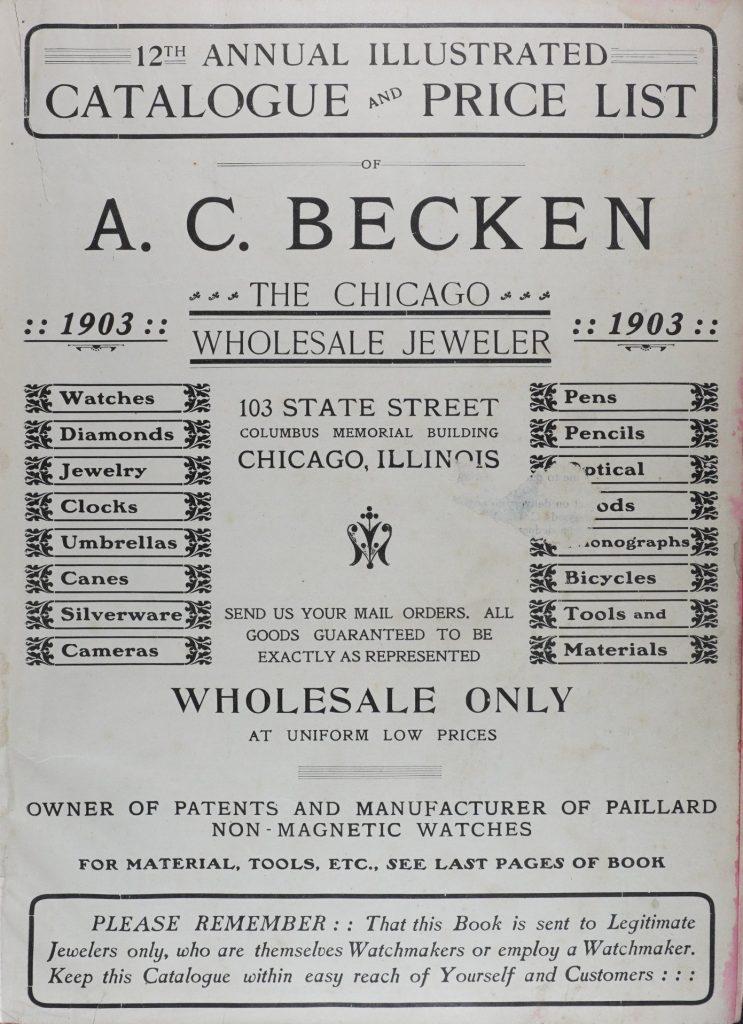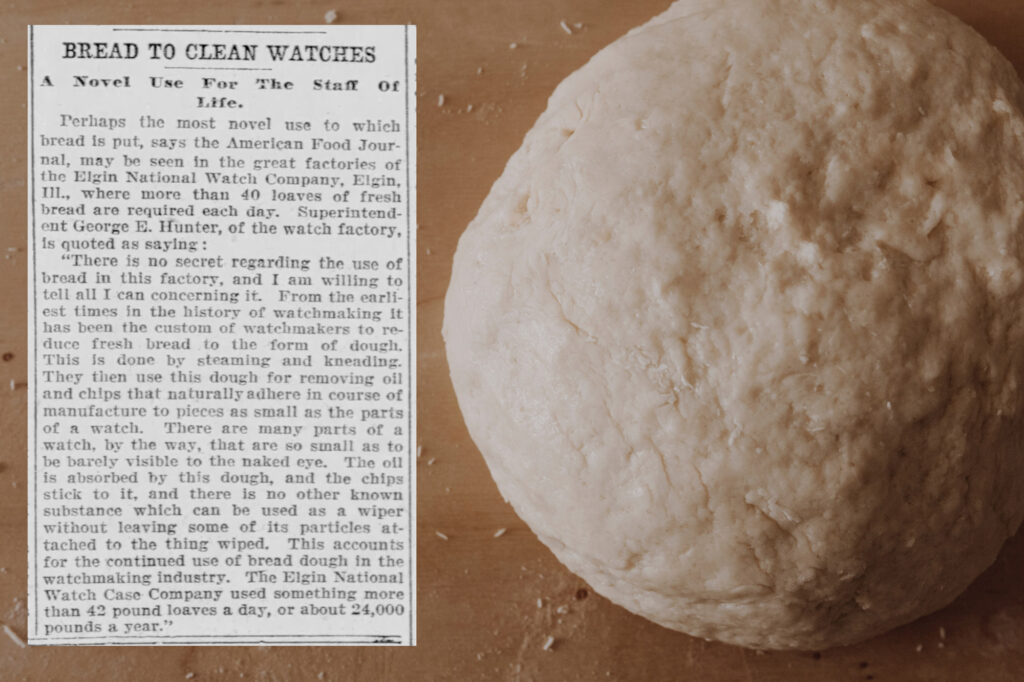Private Label Trade Names on American Pocket Watches: The Non-Magnetic Watch Company: Part 23: Waltham’s Grand Demonstration

Following Thomas Edison’s endorsement praising the Non-Magnetic Watch Company’s watches, Waltham fired back with a grand demonstration that exhibited the properties of their own non-magnetic watch.
In 1887, Major W.R. King created a giant experimental electromagnet using two 15-inch Rodman cannons and eight miles of old torpedo boat cable. Power was supplied by a 30-horse-power dynamo. The force of the magnetic field was so powerful that four 320 lb. cannonball shells could be easily suspended from the magnet.
An article published in the January 14, 1888 issue of Scientific American described King’s enormous electromagnet, concluding with a line that must have immediately caught the attention of Waltham: “Watches were of course stopped when accidentally brought near the guns.”
Recognizing an opportunity to demonstrate their new line of non-magnetic watches, Waltham quickly arranged an experiment to test one of their non-magnetic watches in close proximity to King’s electromagnet.
In April 1888, the grand demonstration was conducted at Willet’s Point in New York. The April 14, 1888 issue of Scientific American reported the results:
“The watch was held in close proximity to the muzzle of one of the guns, forming one pole of the magnet, where the magnetic current was strongest. Its main spring and other portions became so highly charged as to retain their magnetism for several days afterward, but the hair spring, balance, and escapement were so totally unaffected that the rate of the watch, as noted by an astronomical clock before, during, and after the experiment, showed no change whatever.”Scientific American, April 14, 1888
The glowing praise conveyed by the writer concluded with a subtle promotion for Waltham’s non-magnetic watches. Readers were informed that older Waltham watches could be refitted with non-magnetic parts for a small fee.
While Thomas Edison’s endorsement was a respectable achievement for the Non-Magnetic Watch Company, Waltham had demonstrated their own non-magnetic watch on a grand scale, receiving notoriety from the leading scientific publication in the country.




